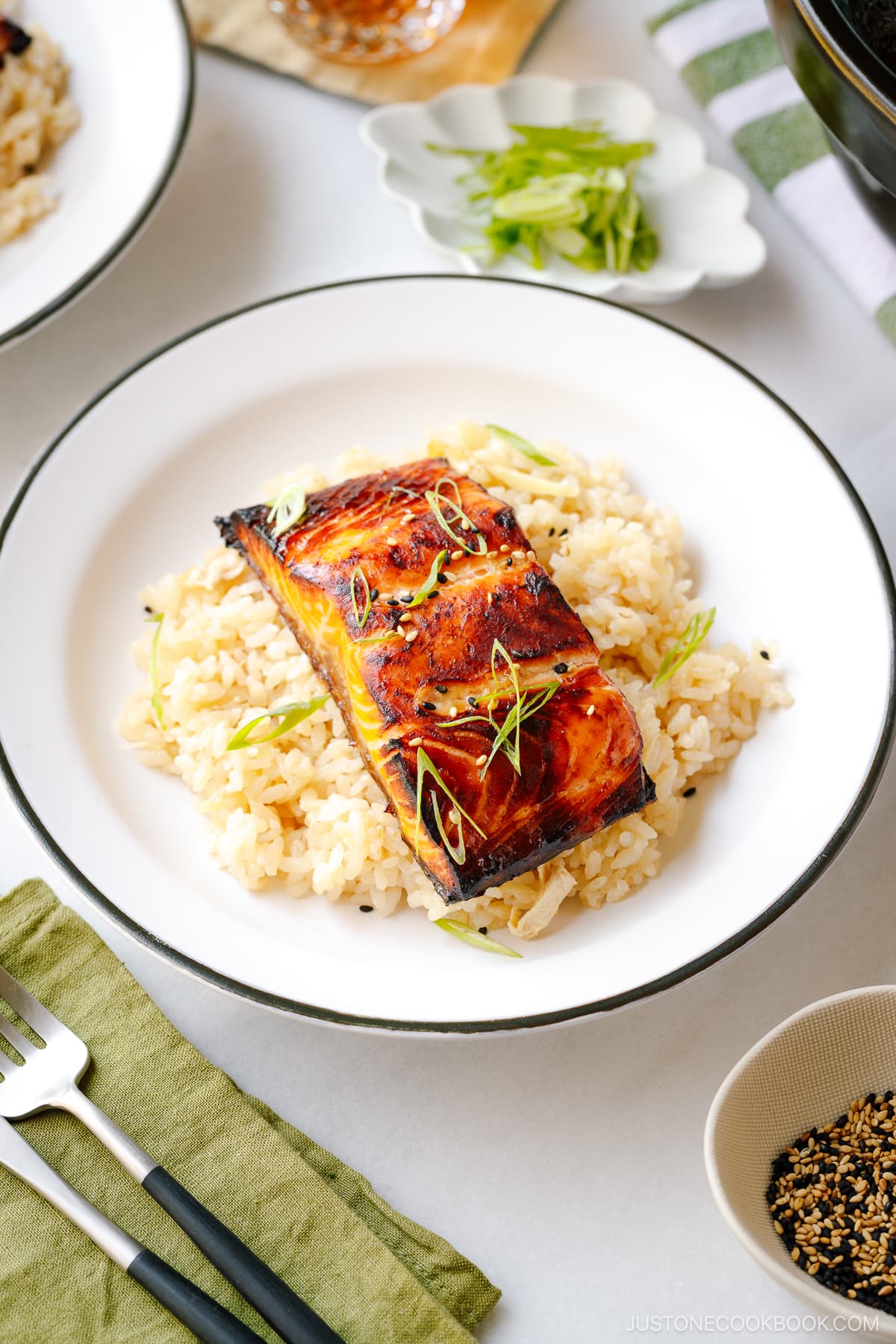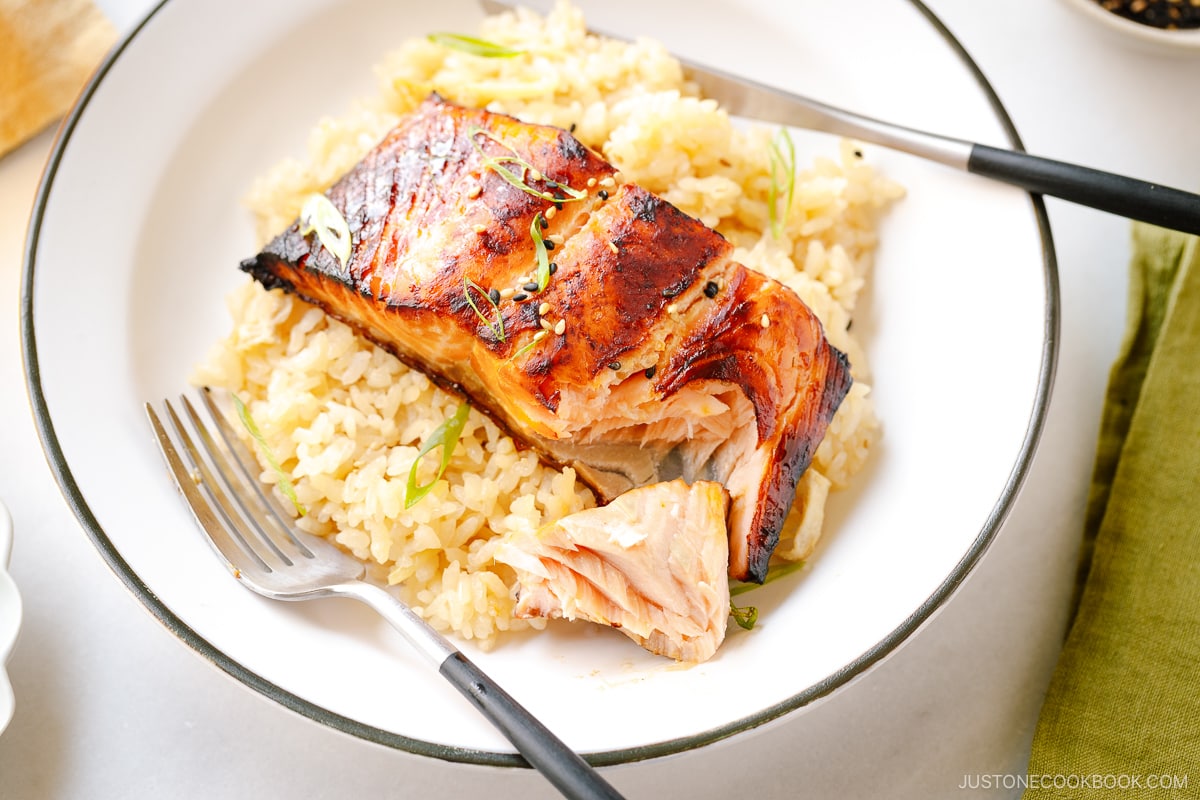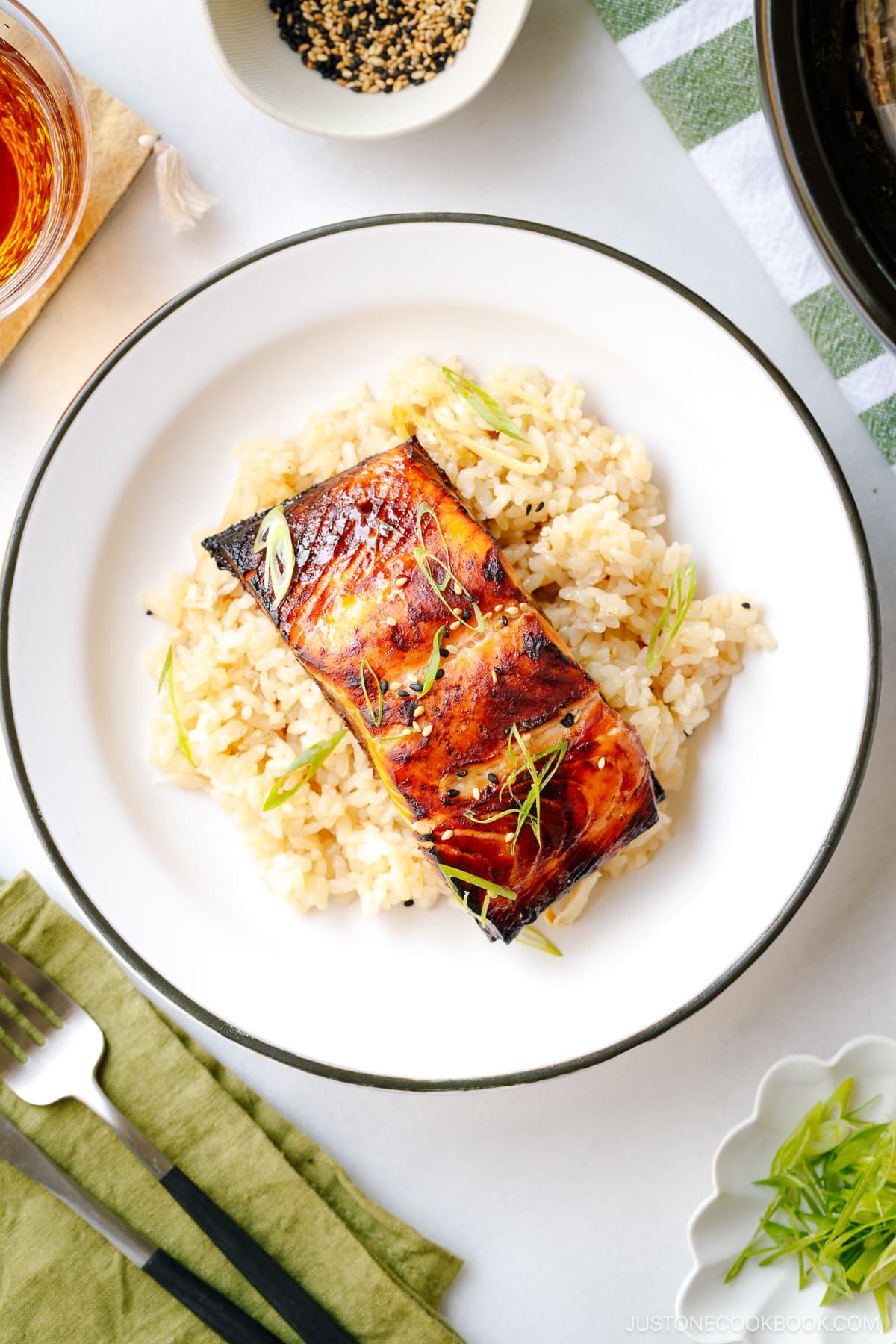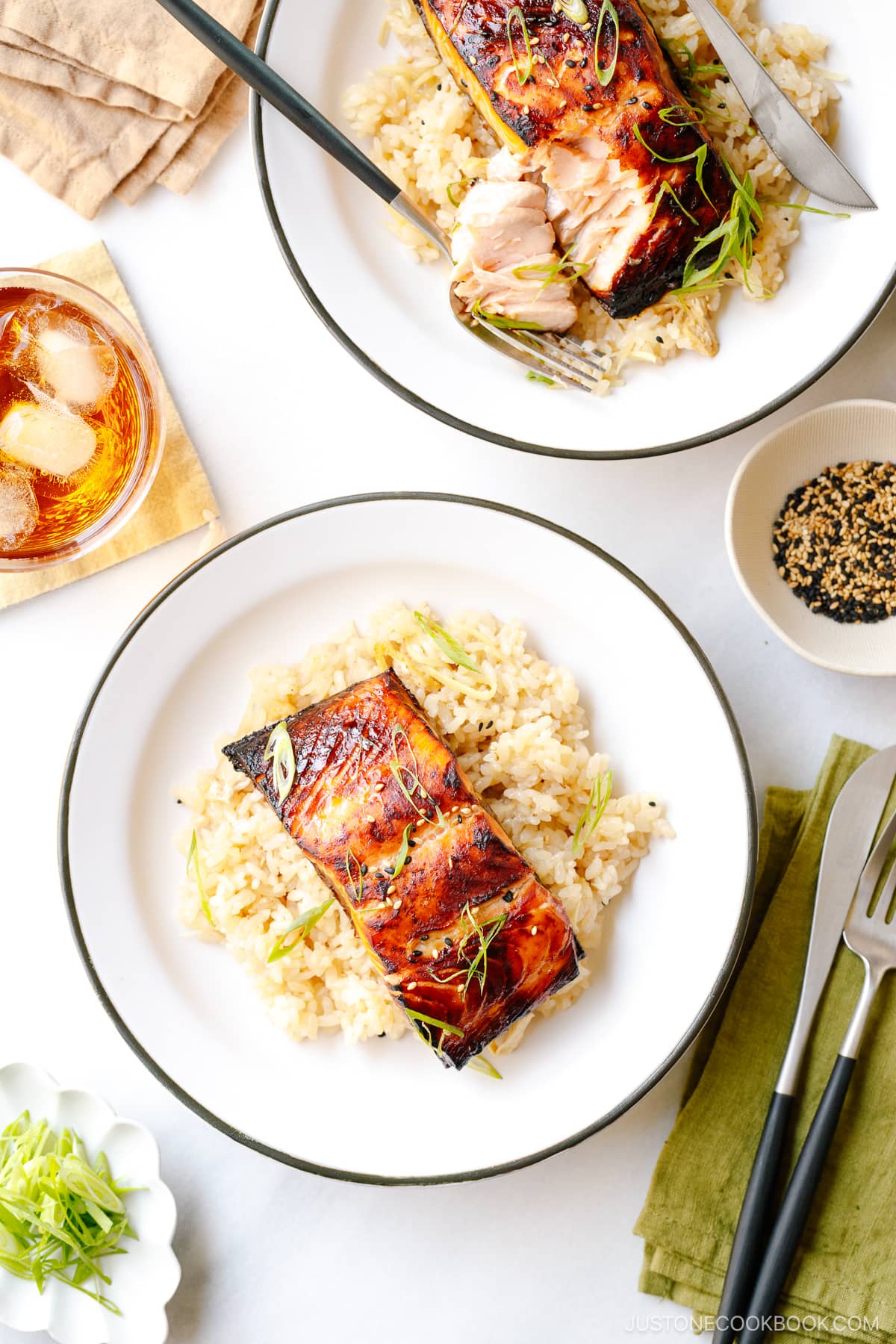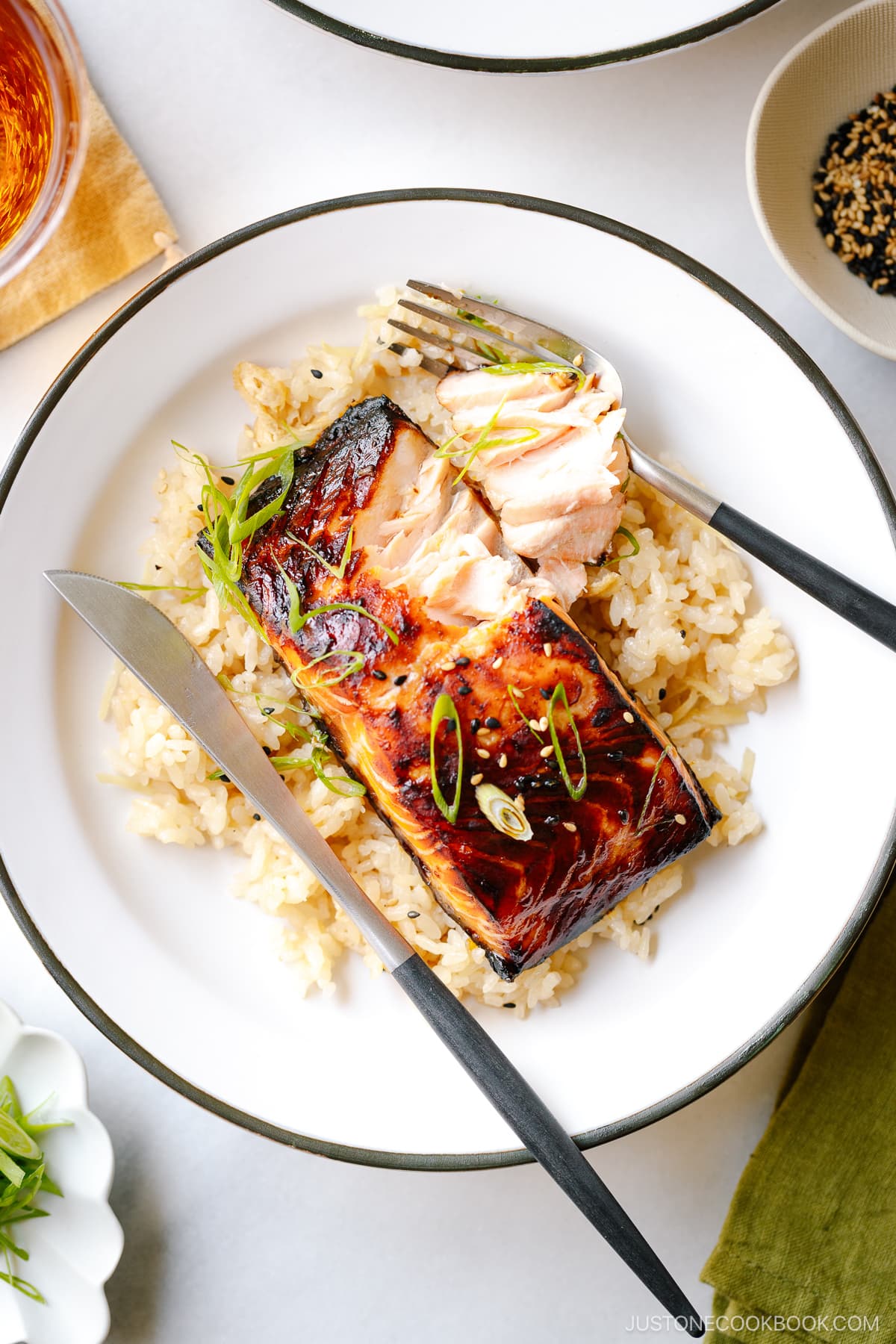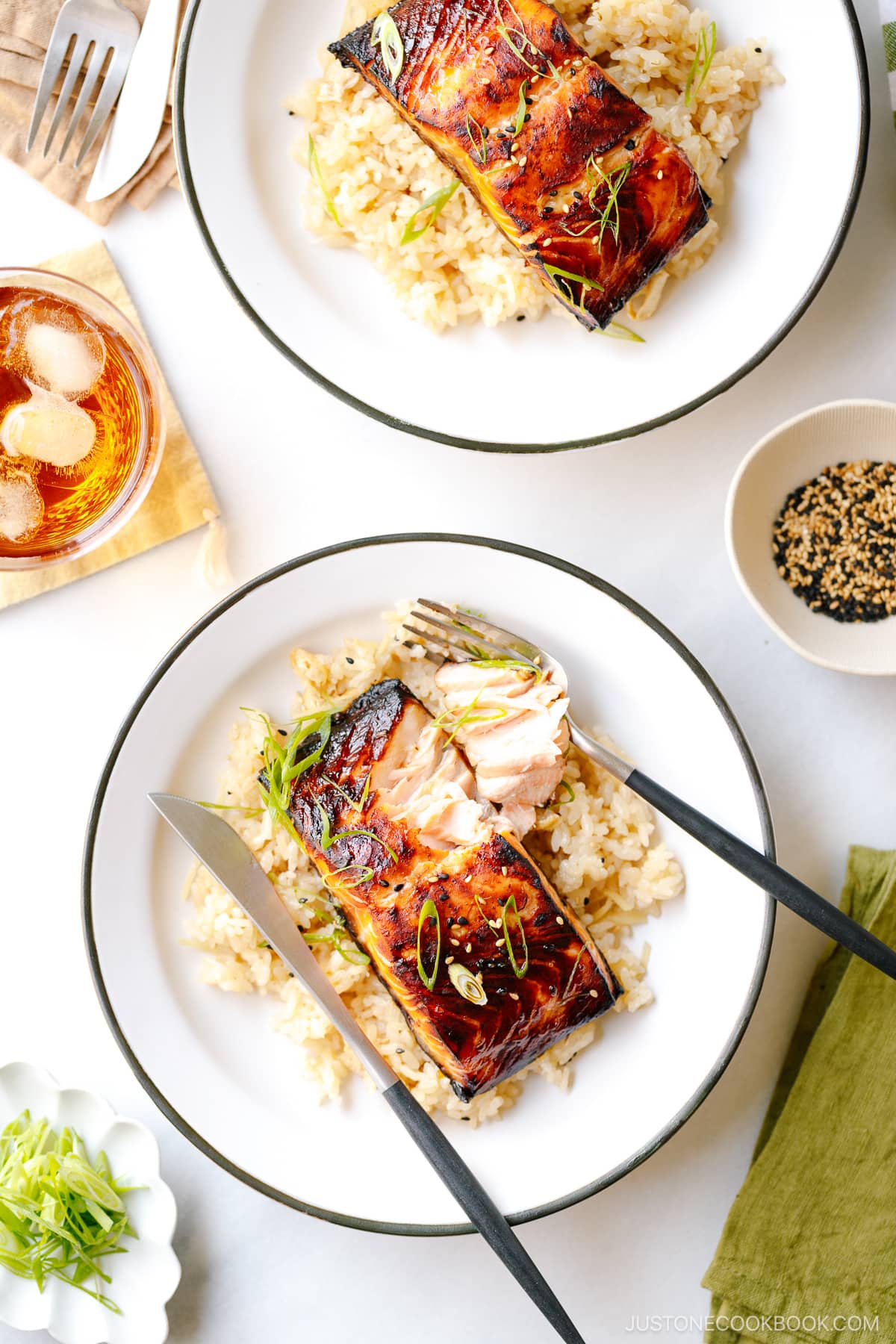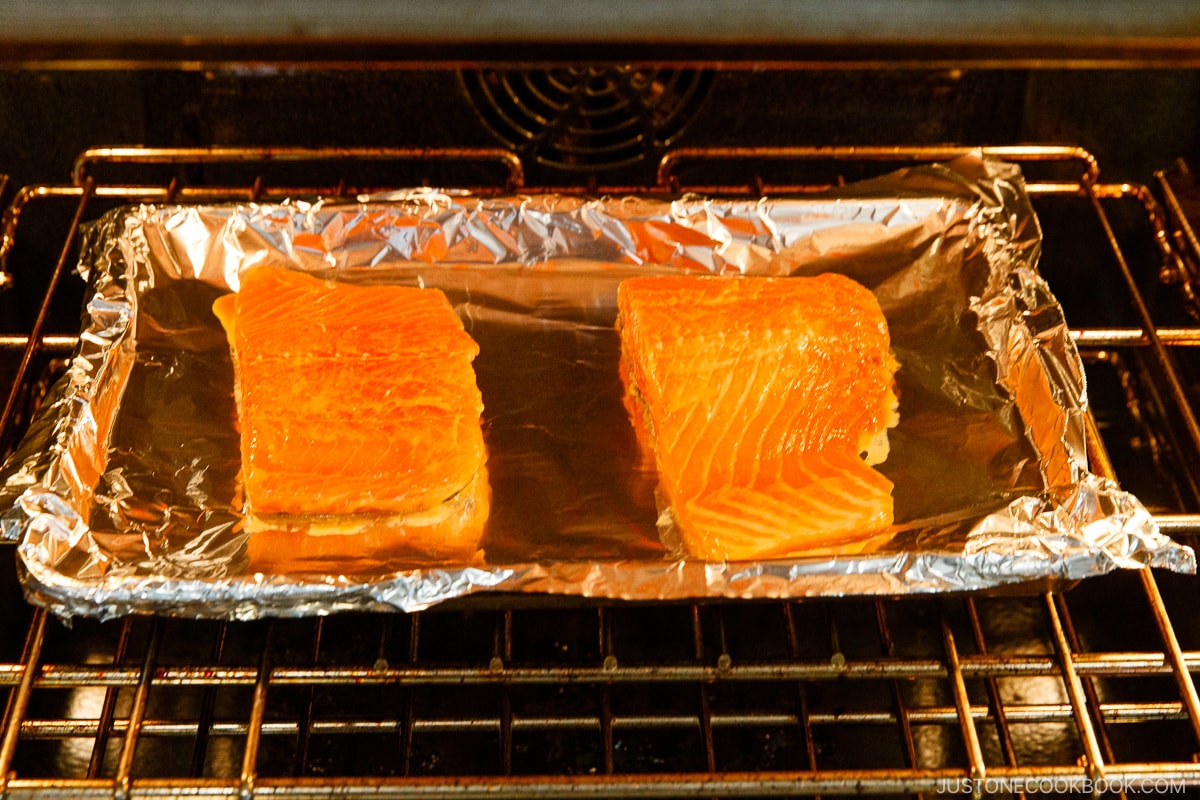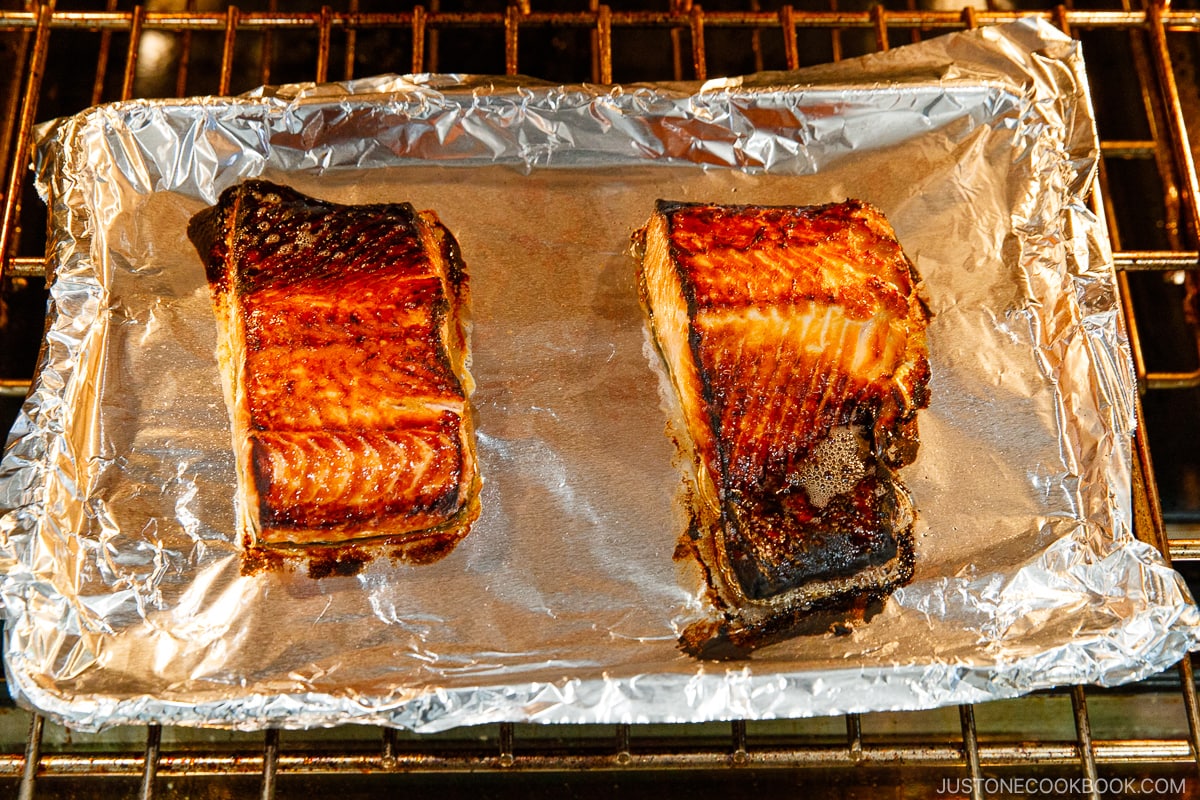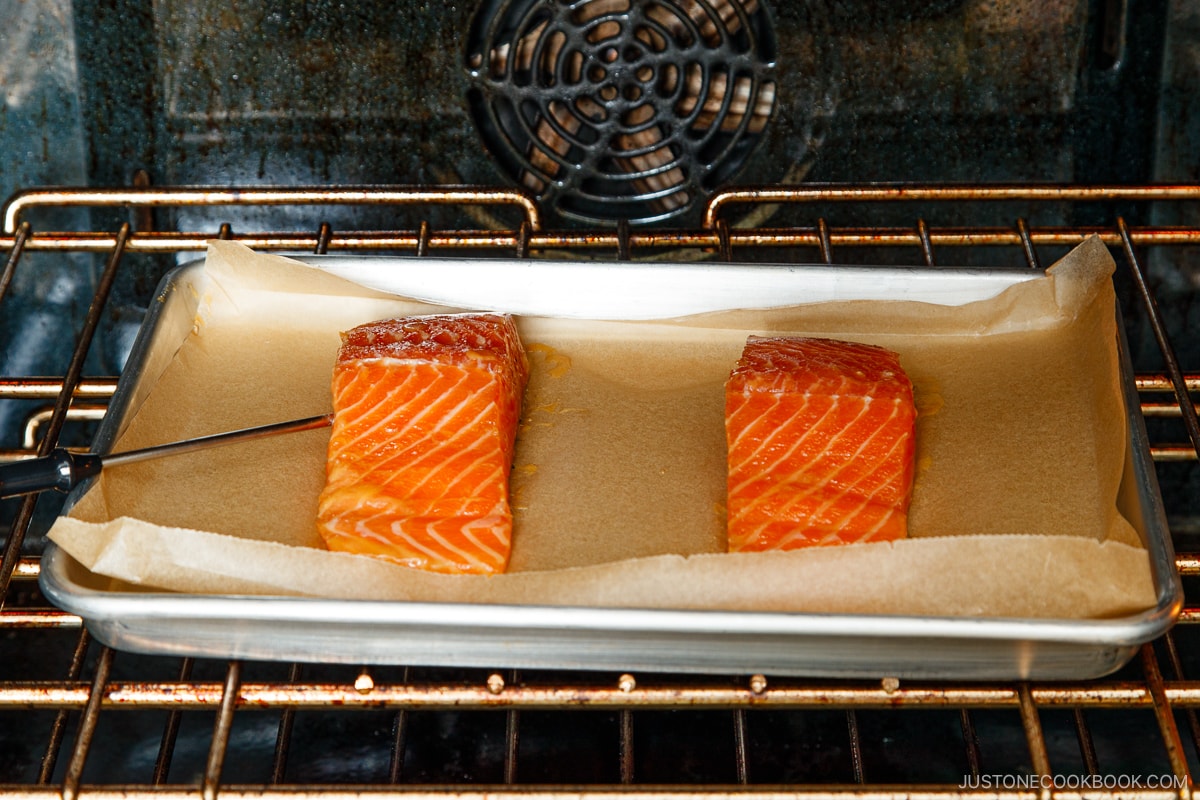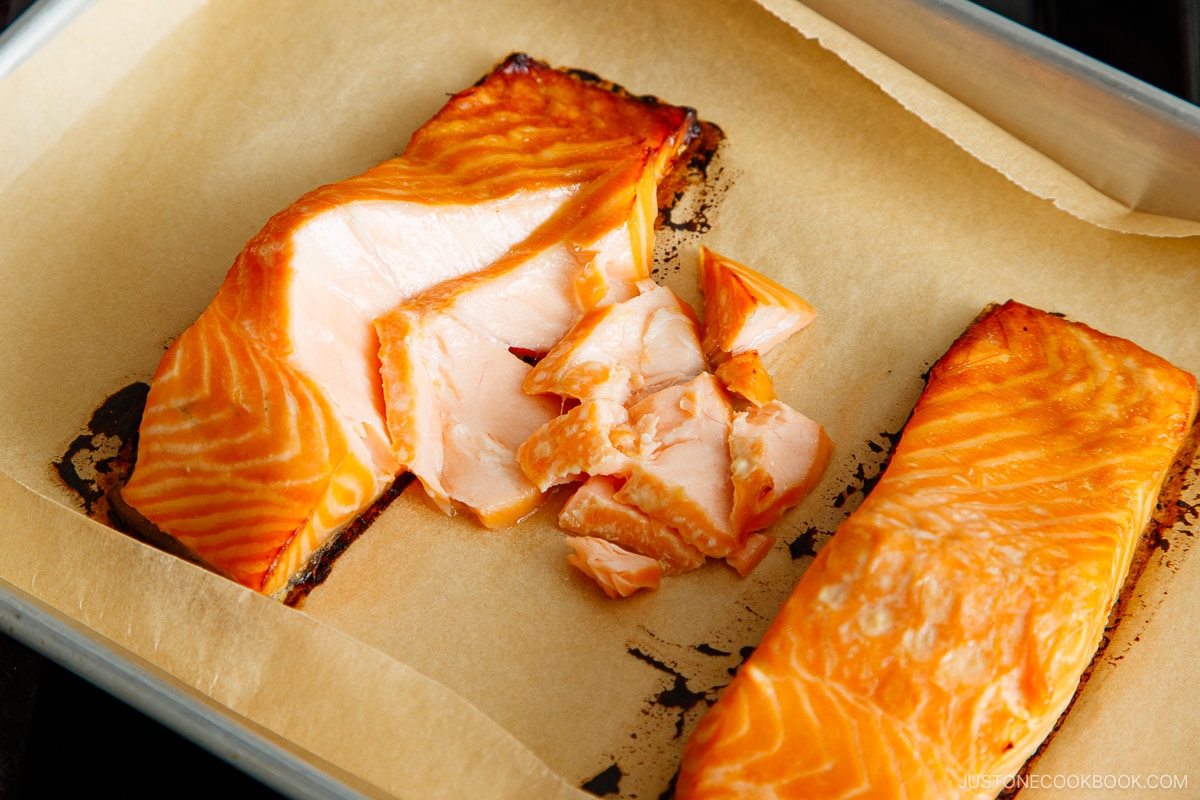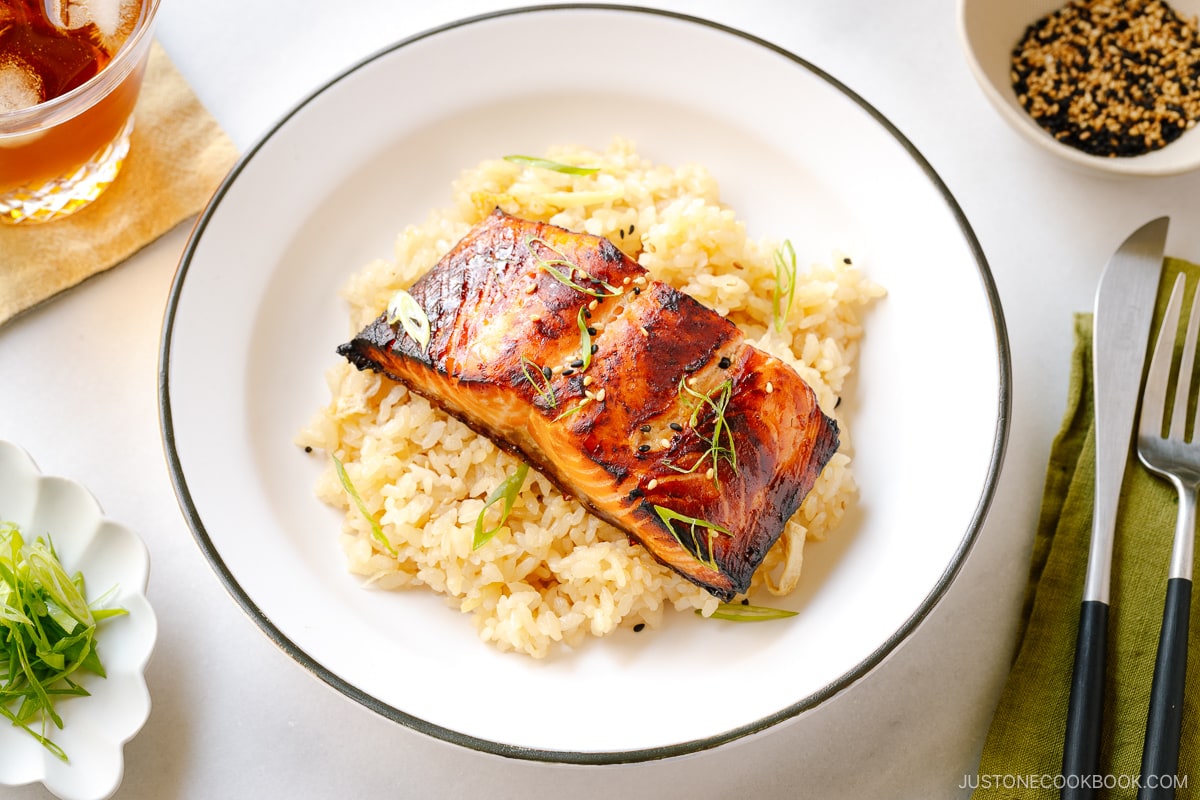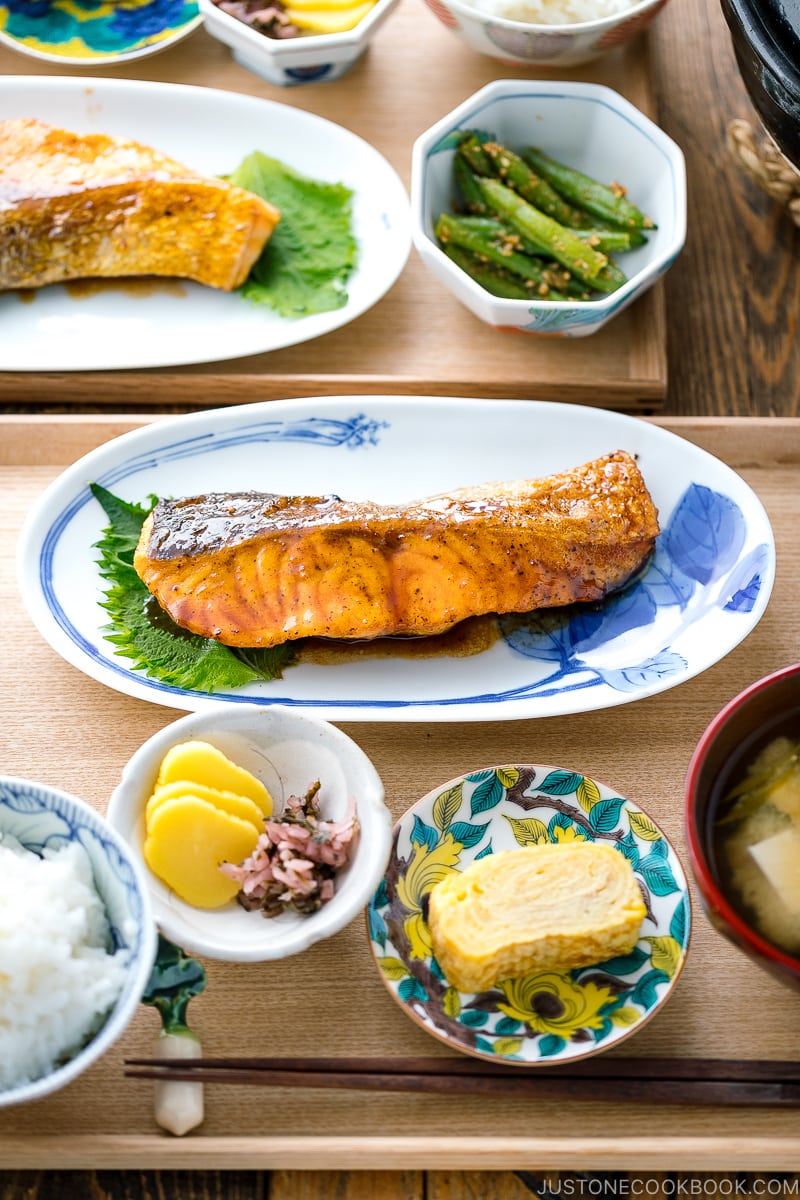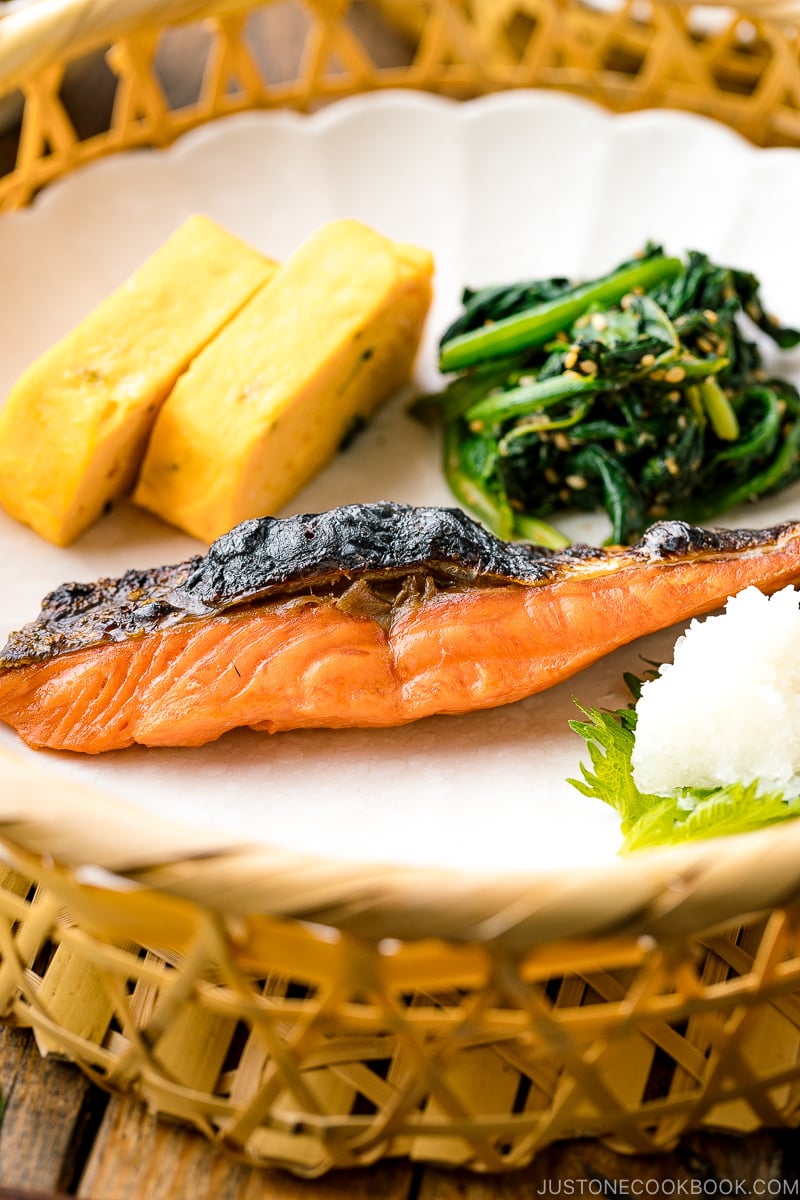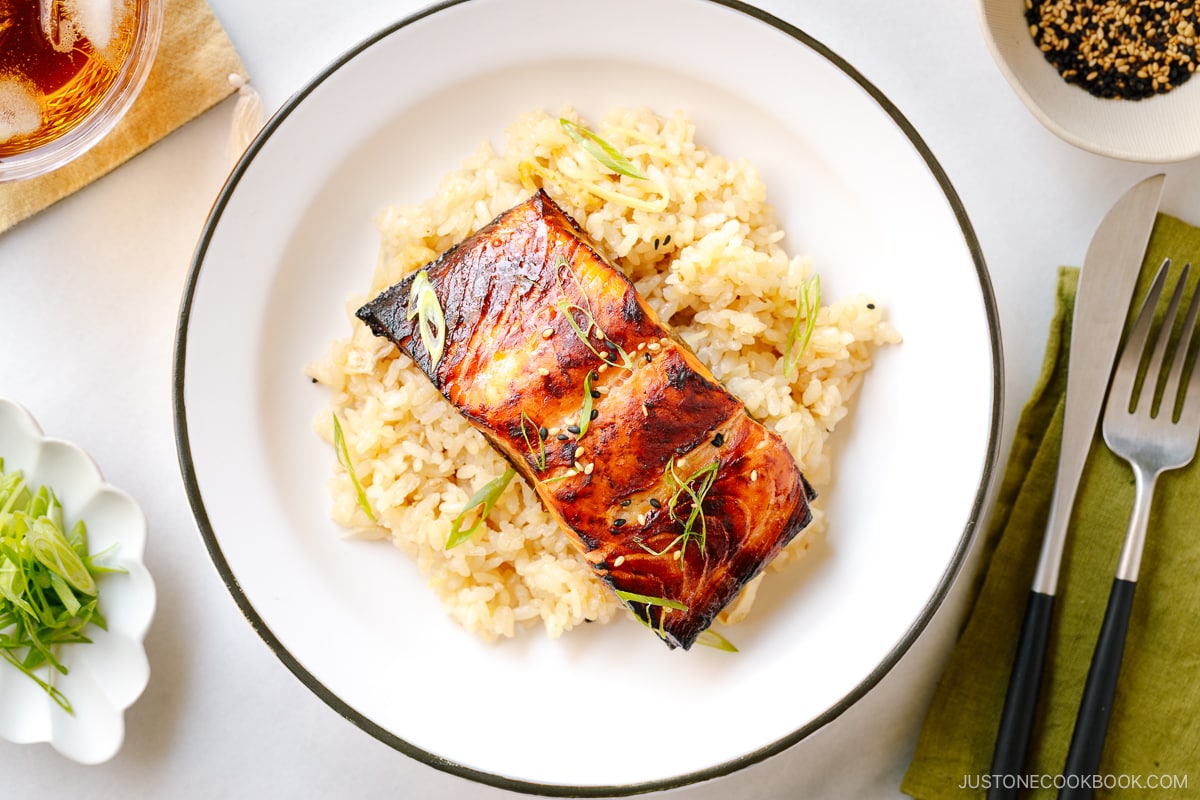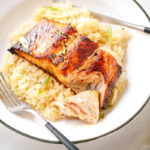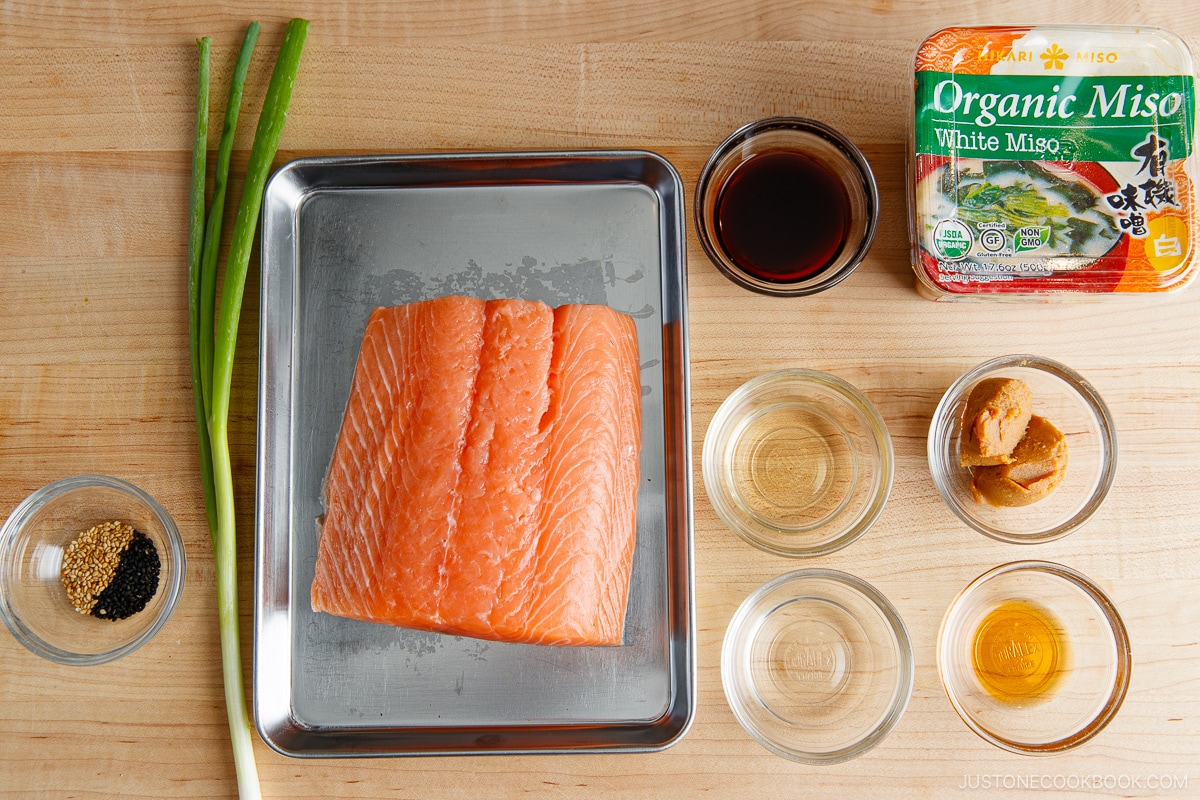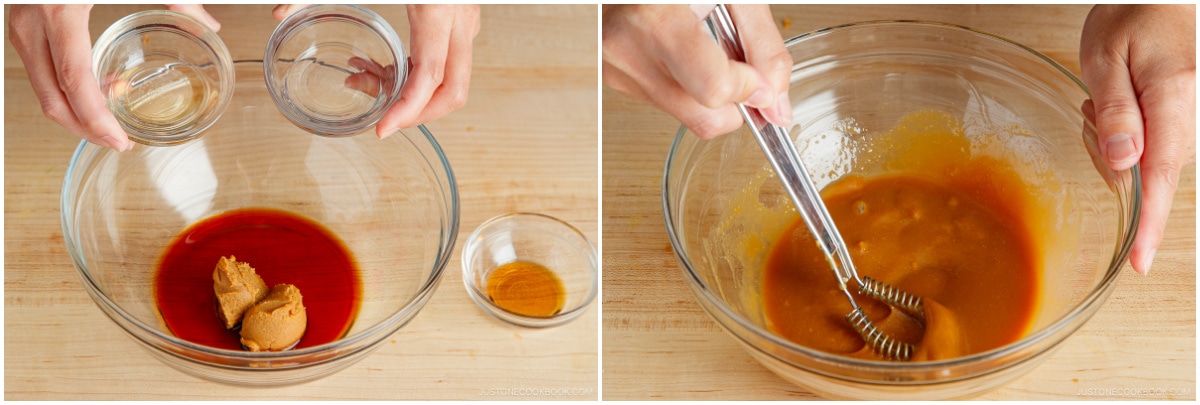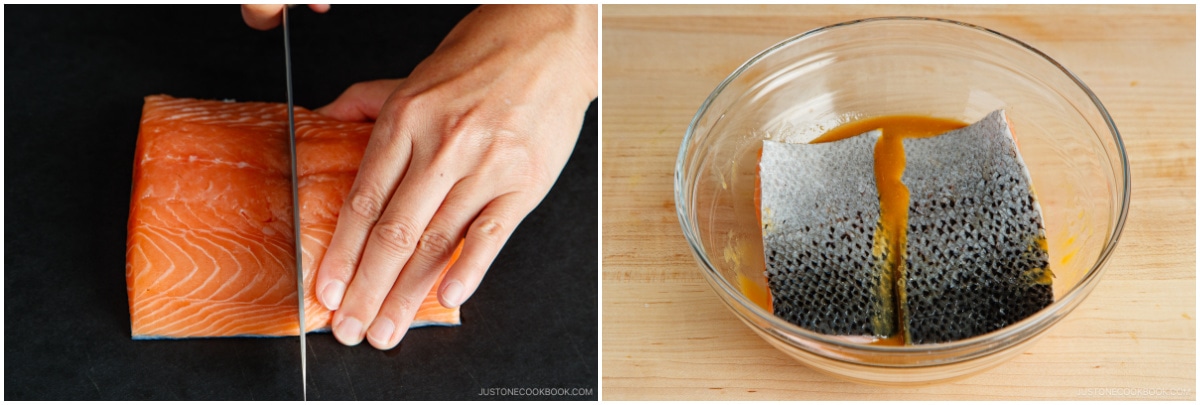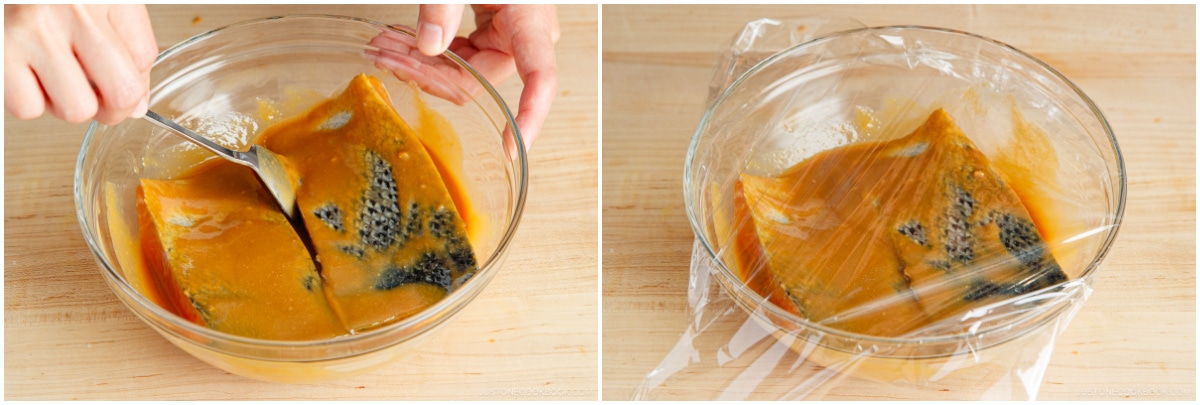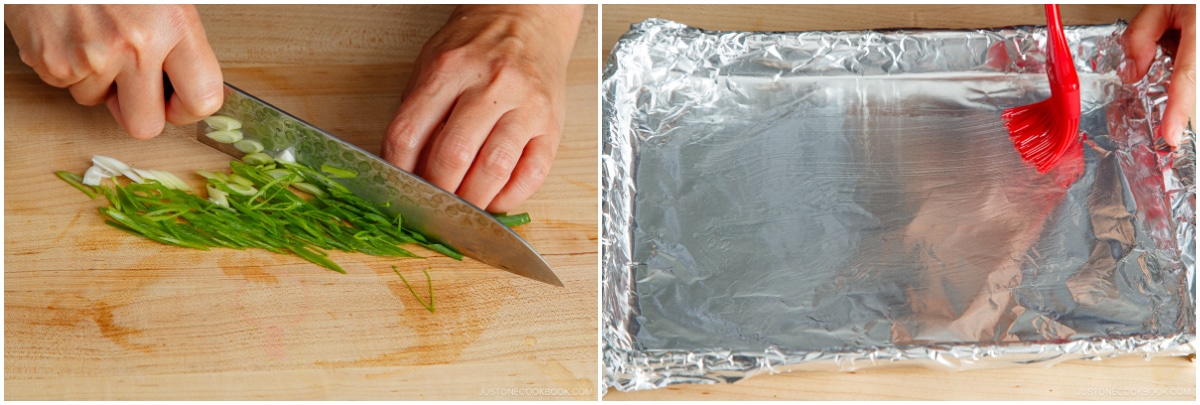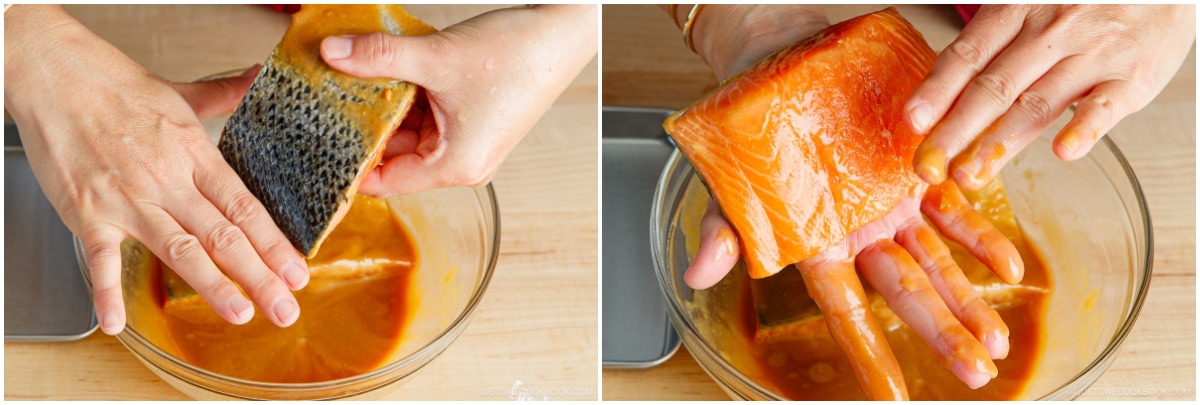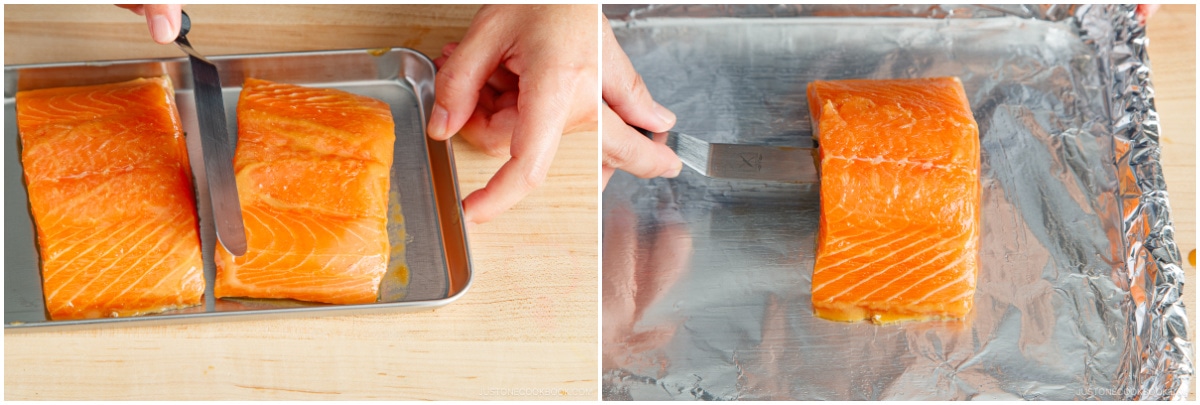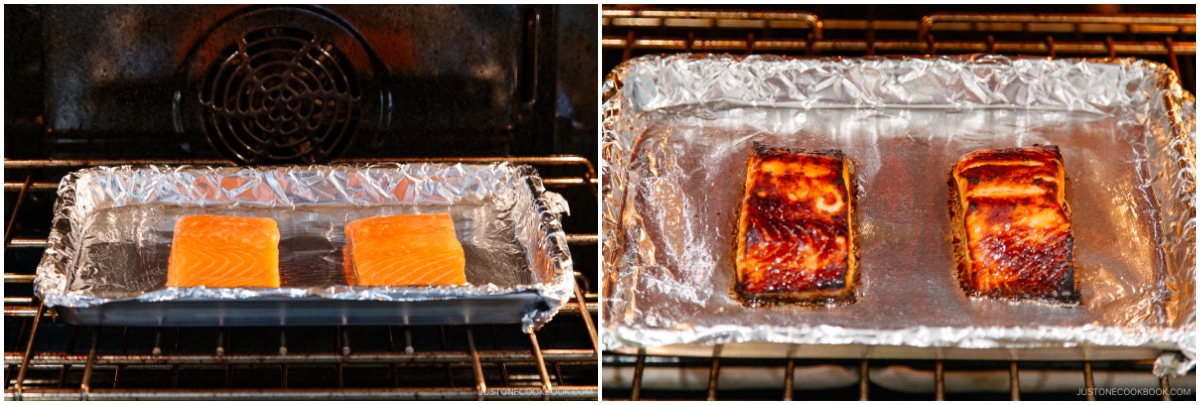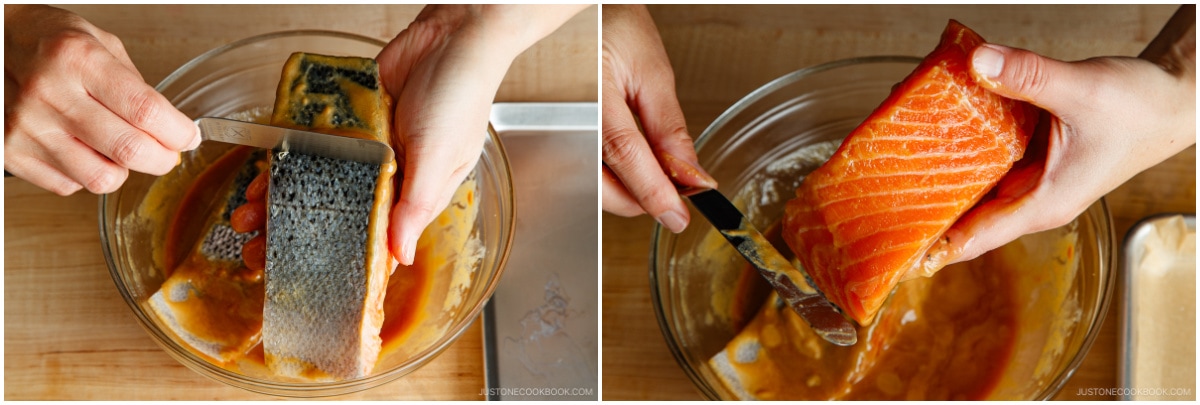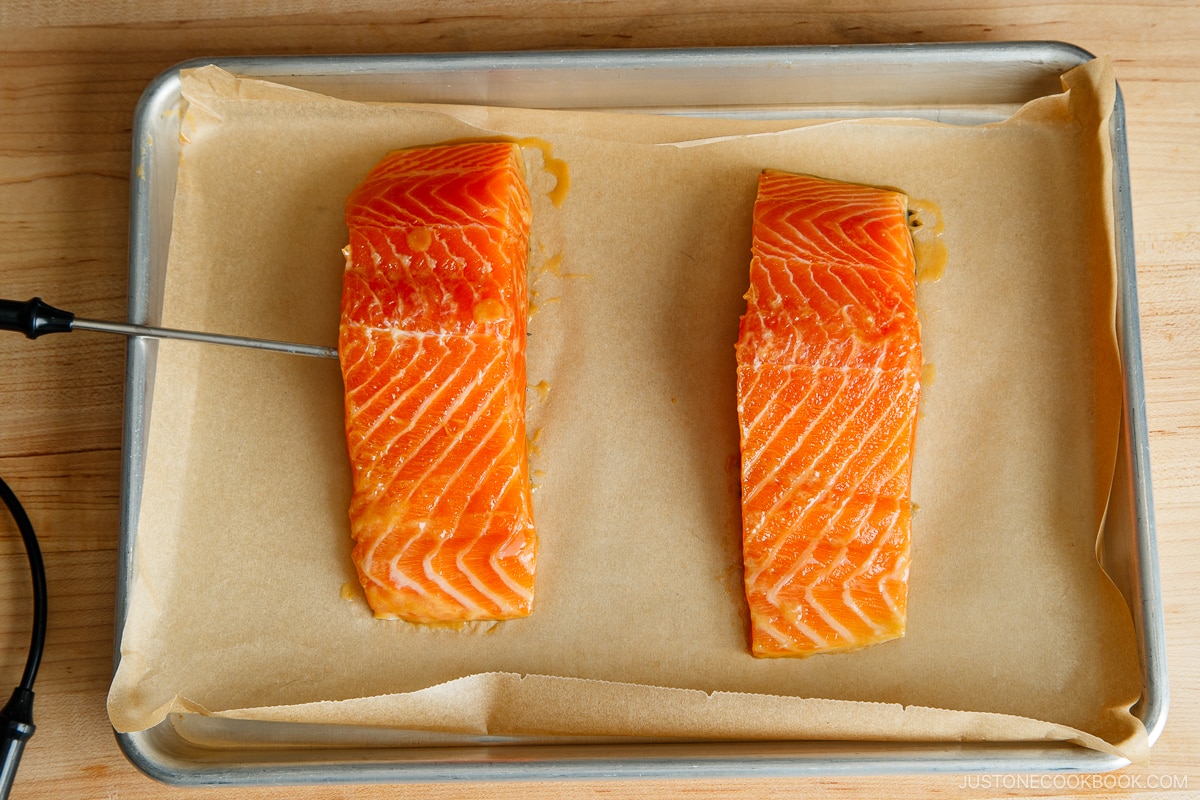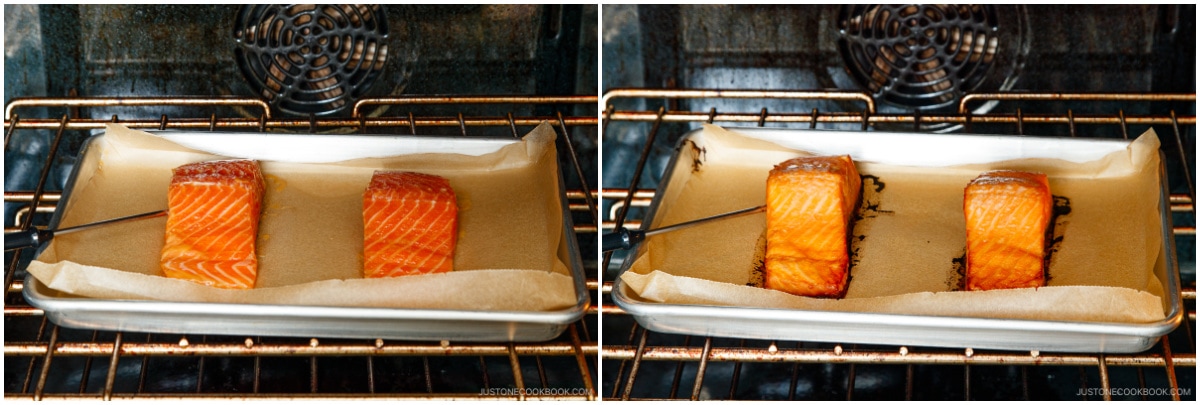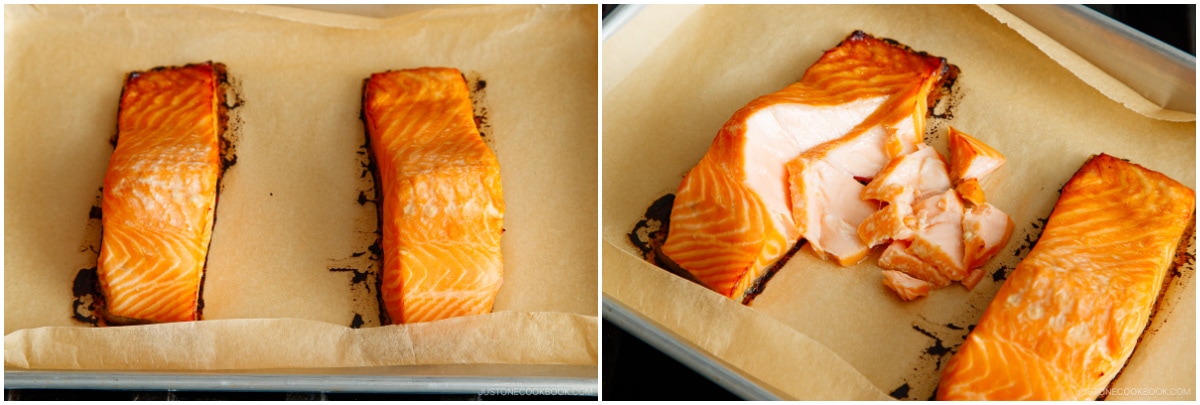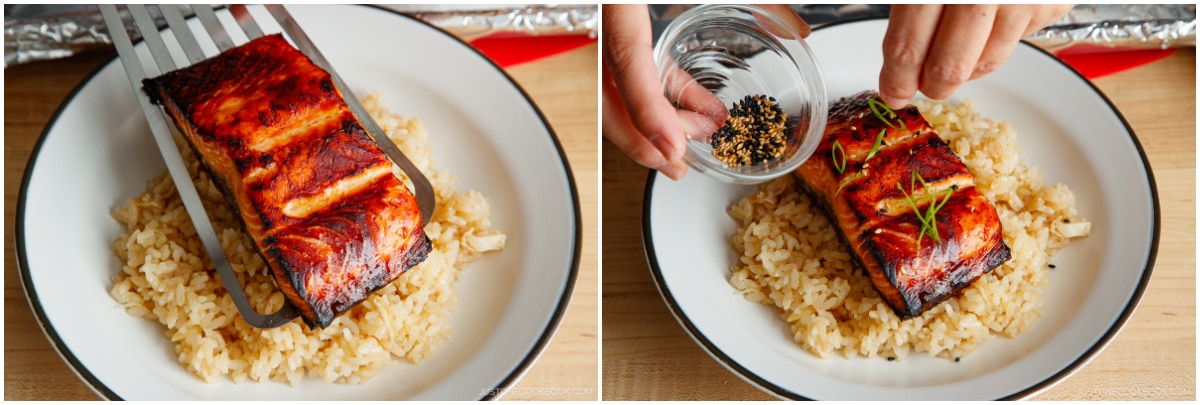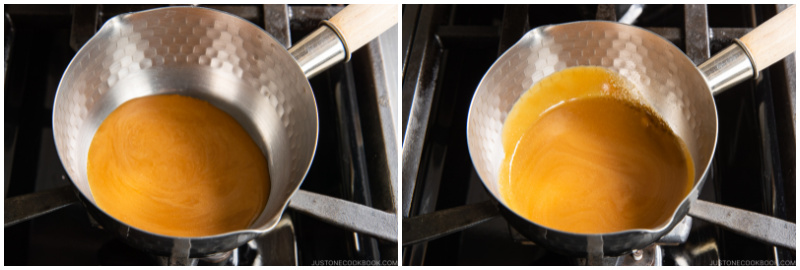Salmon is truly one of the best choices of fish out there! I love that the fish is readily available, extremely versatile, and makes a healthy protein for any meal. Today, I’m going to share my tried-and-true easy salmon recipe—Miso Salmon (味噌サーモン). Here, salmon fillets are marinated in a mixture of miso, sake, mirin, soy sauce, and sesame oil, and then broiled until they become succulent and golden brown. You and your family will love how simple and satisfying it is, especially when served with rice and vegetables.
Using Miso in Japanese Recipes
Miso (味噌) is a Japanese condiment primarily made from fermenting soybeans, salt, koji (a fermentation starter), and sometimes rice or barley. New to miso? Read this post. From miso soup to salad dressing and miso marinated fish, miso is a common condiment used every day in Japanese kitchens. Its sweet and salty flavor makes it a wonderful marinade, particularly well-suited for fatty fish like cod and salmon. I have previously shared the Miso Black Cod recipe made popular by Nobu on the blog. In today’s recipe, we’ll learn the best way to apply the miso treatment to salmon and how to achieve flavorful, tender fish with a golden top that everyone will enjoy.
How to Make Miso Salmon
The Ingredients You’ll Need
Salmon: I recommend using salmon that is less than 1 inch (2.5 cm) thick for broiling. If you don’t have a broiler, wild King/Chinook salmon, which is thick and has a high-fat content, is ideal for baking. You don’t have to worry about the fish drying out quickly. Farmed Atlantic salmon, while very rare to find in the wild, is a more affordable and accessible option. Miso: I use white miso (shiro miso) in this recipe for two reasons. First, it is widely available in Japanese and Asian markets, as well as mainstream grocery stores. Second, the flavor profile complements this recipe well. If you have other types of miso, you can certainly use them (I use various miso for this recipe as well). Just remember that each brand and type of miso has a different level of saltiness, so adjust the amount accordingly. Soy sauce: I use organic kikkoman soy sauce. Please note that Chinese and Korean soy sauces have slightly different tastes.If you plan to cook more Japanese food, consider getting Japanese soy sauce. Sake: I use a $5-8 drinking sake and do not use a cooking sake that contains other ingredients, like salt. Sake is an important ingredient in Japanese cooking (read why it’s important here). If you don’t have it at the moment, use Chinese rice wine or dry sherry. Mirin: Just like sake, mirin is another important condiment for Japanese cooking. More about it in this post. Roasted sesame oil: We just need a tiny bit for the aroma. Garnish: Toasted black and white sesame seeds, and chopped green onion.
The Cooking Steps
How to Prep the Miso Salmon
It’s a very easy recipe, but make sure to read the following tips to make Miso Salmon successfully on the first try!
Broiling Tips
If you’ve been baking salmon all this time, I highly recommend trying the broiling method. When you broil fish, the infrared energy from the heating element cooks the fish. Broiling is a much faster cooking method, resulting in beautifully browned fish that stays juicy and never dries out! However, it’s important to exercise caution when broiling, as the miso, fresh herbs, and other garnishes are prone to burning. Keep a close eye on the food to prevent burning. 🙋🏻♀️ If your oven doesn’t come with a broiler setting, I included the baking method in the recipe card.
How Long Do You Broil Salmon?
Please remember that the broiling time depends entirely on your broiler’s settings, the distance of the rack from the heating element, and the thickness of the salmon fillets. When I buy salmon fillets, I always opt for skin-on, center-cut fillets that are less than 1 inch (2.5 cm) thick. And make sure all the fillets are of the same thickness, each weighing roughly 6 ounces (170 g). After marinating the salmon in the refrigerator, it takes 10-13 minutes to broil.
How Do You Know When Salmon is Done?
You can tell when salmon is cooked when the flesh of the salmon goes from translucent to opaque, and the salmon flakes easily with a fork, chopsticks, or by pressing on the fish. If the fish looks dry, you’ve probably cooked it a bit too long. When salmon is overcooked, you may notice white protein (known as albumin) coming out from the fish. While you can’t undo it, the salmon is still edible, albeit a little dry.
Useful Kitchen Tools
The best method is to use a meat probe thermometer (that comes with your oven) or an instant-read thermometer, especially when the salmon fillets are very thick. With the right tool, you don’t need to guess if the salmon is cooked to the right temperature: It’s perfect every single time.
A probe thermometer allows you to track the temperature of your chicken, turkey, salmon, etc. in the oven as they cook so you don’t have to repeatedly open the oven door to test. An instant-read thermometer is a lot more versatile. You can check the temperature of your deep-frying oil and pan-fried fish or steak.
Q: Wait, you said to cook the salmon until an internal temperature of 125-130°F (52-54ºC). I thought we had to cook it to 145°F (63ºC). The USDA recommends cooking fish to an internal temperature of 145°F (63ºC); however, the remaining heat will continue to cook the salmon, resulting in well-overcooked fish. There are many discussions online on this topic, and many reputable cooking websites do recommend cooking the salmon to 120-130ºF (49-54ºC). Q: Can I marinate the salmon overnight? Miso is quite salty, so I don’t recommend marinating the salmon overnight, especially if the fillet is thin. Also, to marinate the salmon evenly, I recommend cutting a one-pound salmon fillet into two to four pieces. One to two hours is my recommendation. If you feel it’s not flavorful enough, please adjust it to your liking.
Bake vs. Broil Methods
In case you’re curious, I summarized the differences between broiling and baking fish, and which type of fish is suitable for broiling or baking for your future reference.
Broiling Method
When you broil fish, the infrared energy from the heating element cooks the fish. You don’t control the temperature in the oven; instead, you control the distance between the broiler and the surface of the food. Fish suitable for broiling:
Fatty fish—salmon (thin-cut; under 1 inch or 2.5 cm), mackerel, and swordfish Moderately lean fish—cod, haddock (should be brushed with oil before broiled) Thin fish fillet—Japanese fish cut is often very thin (sold at Japanese supermarkets)
Baking Method
When you bake fish, hot air cooks the fish. The heat is carried through your oven by slow-moving natural currents of hot air, which is why baking takes a relatively long time and makes the fish surface a bit dry (see the image above). But it is more hands-off as you do not need to pay attention constantly. Fish suitable for baking:
Fatty fish—salmon (thick and fatty cut), mackerel, and swordfish Whole fish Thick and large fish fillets Lean and fragile fish—sole
What to Serve with Miso Salmon
For a hearty yet wholesome family dinner, I enjoy serving Miso Salmon with Ginger Rice. The rich flavor of miso-marinated salmon is lovely when matched with the aromatic ginger-infused rice. Here are other delicious side dishes that you can serve with Miso Salmon.
Rice: Ginger Rice Soup: Kakitamajiru (Japanese Egg Drop Soup) Sides: Spicy Japanese Pickled Cucumber and Kinpira Gobo Salads: Spinach Gomaae (Japanese Spinach Salad) and Tofu Salad with Sesame Ponzu Dressing
Other Delicious Salmon Recipes
Teriyaki Salmon Salted Salmon (Shiozake/Shiojake) Salmon in Foil Miso Butter Salmon Salmon Kasuzuke
Wish to learn more about Japanese cooking? Sign up for our free newsletter to receive cooking tips & recipe updates! And stay in touch with me on Facebook, Pinterest, YouTube, and Instagram. Editor’s Note: This post was originally published on September 2, 2014. The post has been updated with revised, clear instructions (still the same recipe) with new step-by-step pictures, final photos, and video on November 17, 2023.
